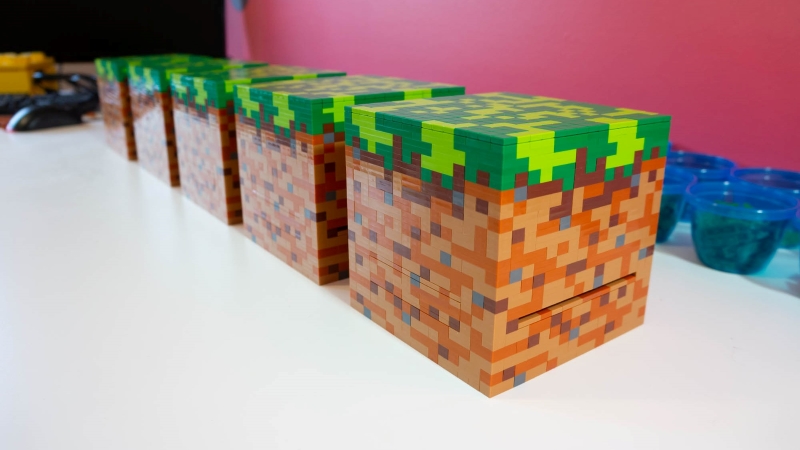There are probably few parents who haven’t watched their kids sitting on the floor, afloat on a sea of LEGO pieces and busily creating, and thought, “If only they could make a living at that.” But time goes on and kids grow up, and parents soon sing the same refrain as the kids sit transfixed by the virtual equivalent of LEGO: Minecraft.
Finding a way to monetize either LEGO or Minecraft is a bit difficult for the young enthusiast; combining both obsessions into a paying proposition would be a dream come true. [Mike Schropp] did it, and this Minecraft-themed LEGO computer case was the result. Intel wanted a LEGO case for their new NUC mini-PC motherboard, and as a sponsor of the Minefaire event, the case needed to be Minecraft themed.
[Mike] chose the block that any Enderman would choose: the basic grass block. Each of the ten cases he made for the show had about 1000 of the smallest LEGO pieces available, to recreate the texture of the grass block in all its faux 8-bit glory. The 4″ x 4″ (10cm x 10cm) 8th Gen NUC board was a great fit for the case, which included slots for ventilation and SD card access, plus pop-out covers to access the board’s ports. It’s not exactly a screamer, but playing Minecraft on a grass block made from LEGO bricks is probably worth the performance hit.
We’ve seen [Mike]’s work a time or two here, most recently with a full-scale LEGO rack-mount server. Our hats off to him for another fun and creative build, and for proving that you’re never too old to LEGO. Or Minecraft.
















Built of vertical stacks of 1x1s, with no 1×2 tie ins to an internal support frame? Ugh. Amateur hour
I see plenty of 1×2, 1×3 and even some 1×4 in there. It’s cosmetic, not structural. Go do better and show everyone how it’s done.
+1
(NO HAD, I didn’t want to report that comment!)
The case is actually made up of a variety of plates, as opposed to bricks. When scaling the system to meet the dimensions of the NUC system I found that 1×1 bricks didn’t work, so instead I used 1×1 plates doubled up to get the right size to scale the case and match the look.
As for types of plates used the case walls are actually made up of 1×1, 1×2, 1×3, 1×4, 1×6, 2×2 corner, 2×3, and 2×4 plates. The 2×2 corner plates join many of the wall sides, with the long edge hidden inside of the walls. With a mix of so many different plates it allowed for creating rigid walls using overlapping techniques. Internally there is an upper and lower frame made up of 2×8, 2×10, 2×12, and 6×14 plates that connect the entire structure.